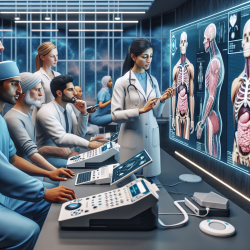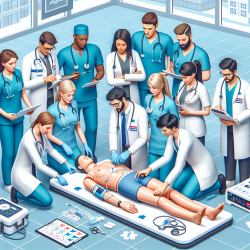Introduction
In the realm of treating spasticity and dystonia, Botulinum Neurotoxin Type A (BoNT-A) stands as a pivotal intervention. However, the efficacy of this treatment is heavily reliant on precise muscle targeting, a skill that requires robust training in anatomy and injection techniques. The research article "Delphi Analysis: Optimizing Anatomy Teaching and Ultrasound Training for Botulinum Neurotoxin Type A Injection in Spasticity and Dystonia" provides a comprehensive framework for enhancing these skills among practitioners.
Key Findings from the Research
The study utilized a modified Delphi process to achieve expert consensus on best practices for anatomy teaching and BoNT-A injection training. Here are some of the crucial insights:
- Understanding the Audience: Training programs should be tailored to the specific needs and competency levels of the target audience. This ensures that the educational activities are relevant and impactful.
- Instructor Alignment: Consistency in teaching methods and content is vital. This can be achieved through pre-training meetings and ongoing collaboration among instructors.
- Hands-On Training: Practical, hands-on activities should be prioritized to enhance engagement and skill acquisition. The use of cadavers and virtual models can significantly enrich the learning experience.
- Simple and Adaptable Curriculum: Training programs should be straightforward yet flexible enough to accommodate various regional and skill-level differences.
Implementing Best Practices
For practitioners seeking to improve their BoNT-A injection skills, integrating these best practices into their training regimen is crucial. Here are actionable steps to consider:
- Participate in Tailored Training Programs: Seek out programs that offer customized training based on your current skill level and learning needs.
- Engage in Continuous Learning: Stay updated with the latest techniques and guidelines by participating in workshops and seminars that emphasize hands-on practice.
- Collaborate with Peers: Engage with fellow practitioners to share insights and experiences, fostering a community of continuous improvement.
- Utilize Technology: Leverage virtual models and other technological tools to enhance your understanding of anatomy and injection techniques.
Encouraging Further Research
While the study provides a solid foundation, there is always room for further exploration. Practitioners are encouraged to contribute to ongoing research efforts, helping to refine and expand the body of knowledge surrounding BoNT-A injection training.
Conclusion
By implementing the best practices identified through the Delphi analysis, practitioners can significantly enhance their skills in BoNT-A injection, ultimately leading to better patient outcomes. This commitment to excellence in training not only benefits individual practitioners but also elevates the standard of care provided to patients with spasticity and dystonia.
To read the original research paper, please follow this link: Delphi Analysis: Optimizing Anatomy Teaching and Ultrasound Training for Botulinum Neurotoxin Type A Injection in Spasticity and Dystonia.










